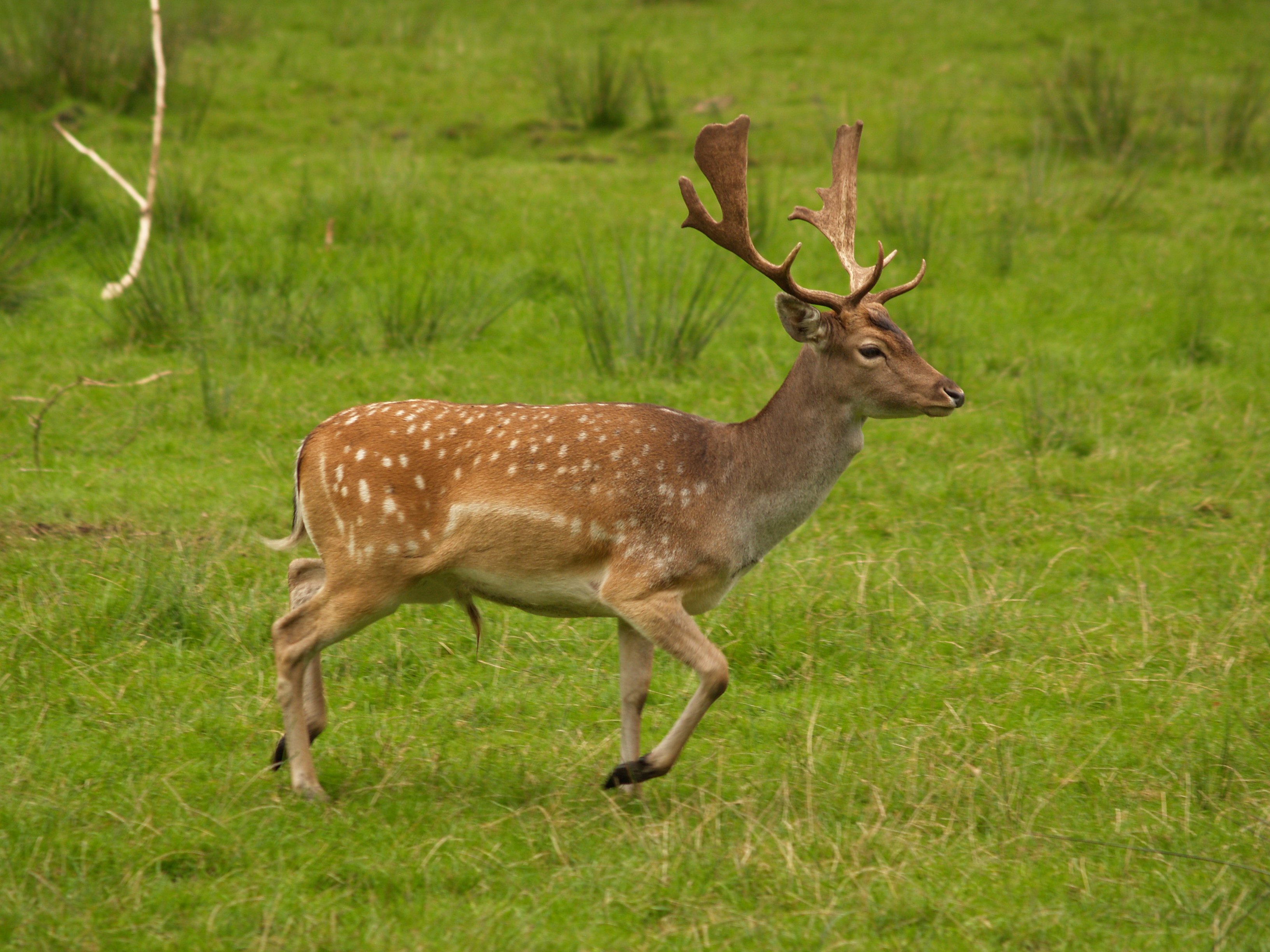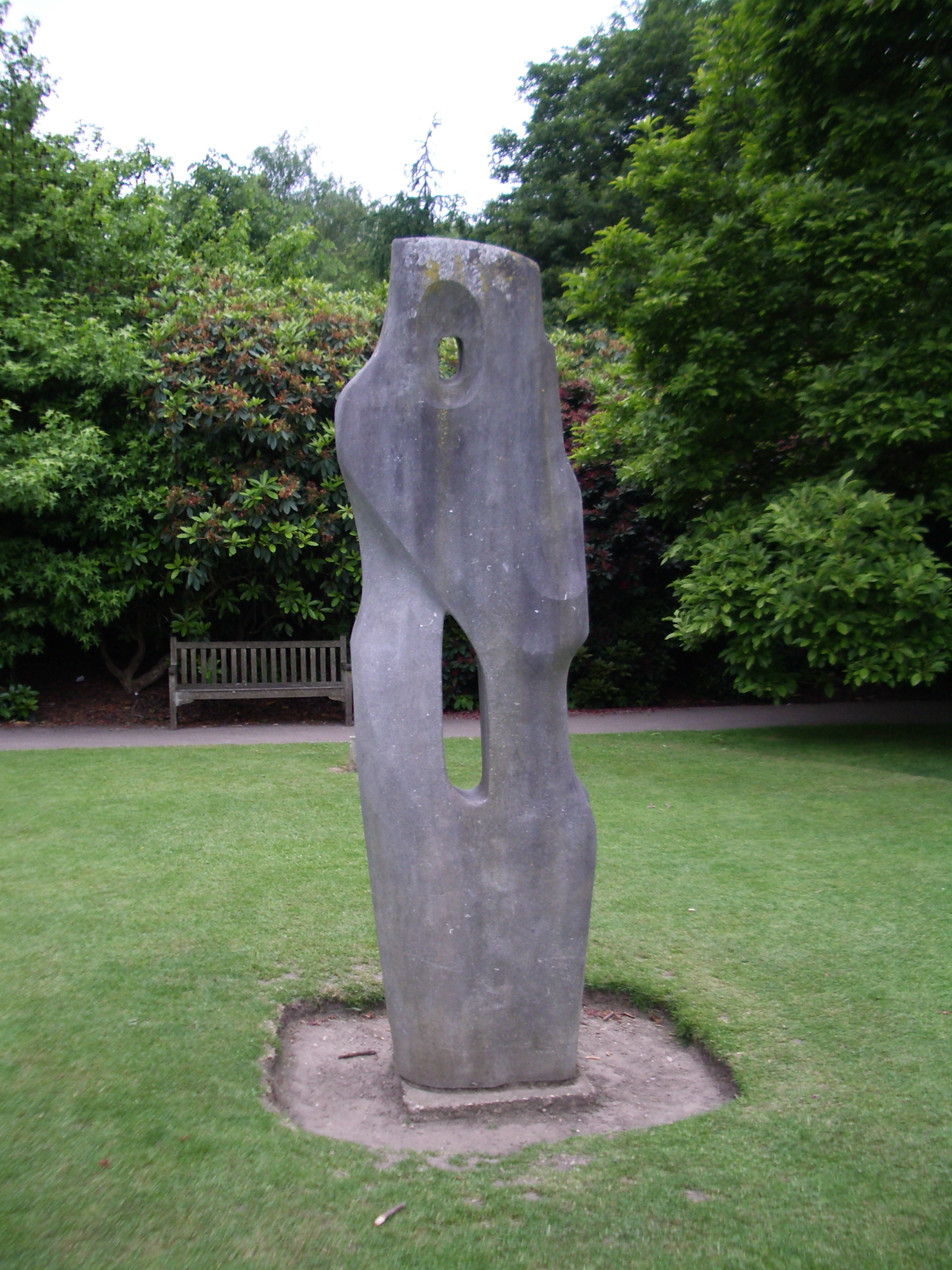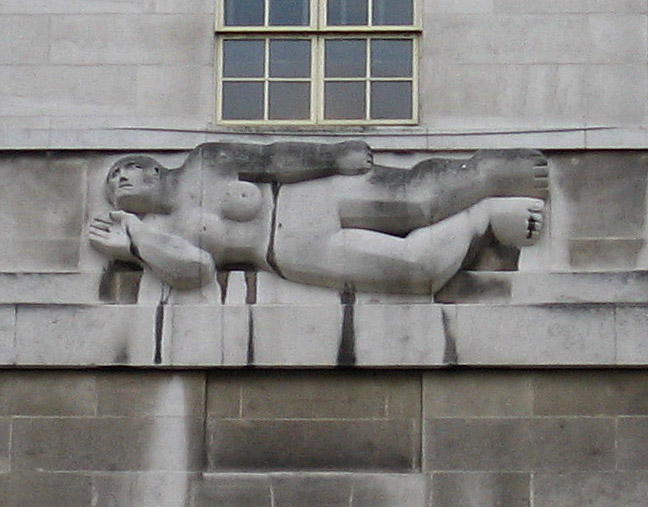|
Margam Park
Margam Country Park is a country park estate in Wales, of around 850 acres (3.4 km²). It is situated in Margam, about 2 miles (3 km) from Port Talbot in south Wales. It was once owned by the Mansel Talbot family and is now owned and administered by the local council, Neath Port Talbot County Borough Council. Situated within the park are three notable buildings: Margam Abbey, a Cistercian monastery; Margam Castle, a neo-Gothic country house that was once the seat of the Mansel Talbot family; and the 18th-century Orangery. Country park Margam Park owes its location and beginnings to the monastery, which was acquired by Sir Rice Mansel in 1540 after the Dissolution of the Monasteries in 1537. A Tudor mansion was later built on the site of the former monastic ranges by Sir Rice Mansel as a county residence. In 1661, the first mention of a garden is referenced, including walled areas and by 1727 the estate's gardener drew up a catalogue of the plants at the gardens. ... [...More Info...] [...Related Items...] OR: [Wikipedia] [Google] [Baidu] |
Country Park
A country park is a natural area designated for people to visit and enjoy recreation in a countryside environment. United Kingdom History In the United Kingdom, the term ''country park'' has a special meaning. There are around 250 recognised country parks in England and Wales attracting some 57 million visitors a year, and another 40 or so in Scotland. Most country parks were designated in the 1970s, under the Countryside Act 1968, with the support of the former Countryside Commission. In more recent times there has been no specific financial support for country parks directly and fewer have been designated. Most parks are managed by local authorities, although other organisations and private individuals can also run them. The 1968 Countryside Act empowered the Countryside Commission to recognize country parks. Although the Act established country parks and gave guidance on the core facilities and services they should provide it did not empower the designation of sites as country ... [...More Info...] [...Related Items...] OR: [Wikipedia] [Google] [Baidu] |
Anthony Keck
Anthony Keck (1726–1797) was an 18th-century English architect with an extensive practice in Gloucestershire, Worcestershire, Herefordshire and South Wales. Life Keck was born at Randwick, Gloucestershire in 1726 He designed in the "austere Neoclassical style of the late eighteenth century – a provincial follower of Robert Adam." He died at Kings Stanley, Gloucestershire, the village where he had his workshop and studio for most of his life, on 4 October 1797 at the age of seventy. He died at Beech House in the village, the home he partly designed for himself, and is buried in St. George's Church. Works Keck is credited with designing some fifty country houses in the South-West of England and South Wales. His works include: * Longworth Hall, Herefordshire * Barnsley Park, Cirencester, Gloucestershire * Burghill Court, Herefordshire * Flaxley Abbey, Forest of Dean, Gloucestershire * Forthampton Court, Gloucestershire * Ham Court, Upton-upon-Severn, Gloucestershire, demo ... [...More Info...] [...Related Items...] OR: [Wikipedia] [Google] [Baidu] |
Red Deer
The red deer (''Cervus elaphus'') is one of the largest deer species. A male red deer is called a stag or hart, and a female is called a hind. The red deer inhabits most of Europe, the Caucasus Mountains region, Anatolia, Iran, and parts of western Asia. It also inhabits the Atlas Mountains of Northern Africa; its early ancestors are thought to have crossed over to Morocco, then to Algeria, Libya and Tunisia via the Strait of Gibraltar, becoming the only species of true deer (Cervidae) to inhabit Africa. Red deer have been introduced to other areas, including Australia, New Zealand, the United States, Canada, Peru, Uruguay, Chile and Argentina. In many parts of the world, the meat (venison) from red deer is used as a food source. Red deer are ruminants, characterized by a four-chambered stomach. Genetics, Genetic evidence indicates that the red deer, as traditionally defined, is a species group, rather than a single species, though exactly how many species the group includes rem ... [...More Info...] [...Related Items...] OR: [Wikipedia] [Google] [Baidu] |
Fallow Deer
''Dama'' is a genus of deer in the subfamily Cervinae, commonly referred to as fallow deer. Name The name fallow is derived from the deer's pale brown colour. The Latin word ''dāma'' or ''damma'', used for roe deer, gazelles, and antelopes, lies at the root of the modern scientific name, as well as the German ''Damhirsch'', French ''daim'', Dutch ''damhert'', and Italian ''daino''. In Croatian and Serbian, the name for the fallow deer is ''jelen lopatar'' ("shovel deer"), due to the form of its antlers. The Modern Hebrew name of the fallow deer is ''yachmur'' (יחמור). Taxonomy and evolution The genus includes two extant species: Extant species Some taxonomists include the Persian fallow deer as a subspecies In biological classification, subspecies is a rank below species, used for populations that live in different areas and vary in size, shape, or other physical characteristics (morphology), but that can successfully interbreed. Not all species ... (''D. d. me ... [...More Info...] [...Related Items...] OR: [Wikipedia] [Google] [Baidu] |
Normans
The Normans (Norman language, Norman: ''Normaunds''; french: Normands; la, Nortmanni/Normanni) were a population arising in the medieval Duchy of Normandy from the intermingling between Norsemen, Norse Viking settlers and indigenous West Francia, West Franks and Gallo-Roman culture, Gallo-Romans. The term is also used to denote emigrants from the duchy who conquered other territories such as England and Sicily. The Norse settlements in West Francia followed a series of raids on the French northern coast mainly from Denmark, although some also sailed from Norway and Sweden. These settlements were finally legitimized when Rollo, a Scandinavian Viking leader, agreed to swear fealty to Charles the Simple, King Charles III of West Francia following the Siege of Chartres (911), siege of Chartres in 911. The intermingling in Normandy produced an Ethnic group, ethnic and cultural "Norman" identity in the first half of the 10th century, an identity which continued to evolve over the ce ... [...More Info...] [...Related Items...] OR: [Wikipedia] [Google] [Baidu] |
Deer
Deer or true deer are hoofed ruminant mammals forming the family Cervidae. The two main groups of deer are the Cervinae, including the muntjac, the elk (wapiti), the red deer, and the fallow deer; and the Capreolinae, including the reindeer (caribou), white-tailed deer, the roe deer, and the moose. Male deer of all species (except the water deer), as well as female reindeer, grow and shed new antlers each year. In this they differ from permanently horned antelope, which are part of a different family (Bovidae) within the same order of even-toed ungulates (Artiodactyla). The musk deer (Moschidae) of Asia and chevrotains (Tragulidae) of tropical African and Asian forests are separate families that are also in the ruminant clade Ruminantia; they are not especially closely related to Cervidae. Deer appear in art from Paleolithic cave paintings onwards, and they have played a role in mythology, religion, and literature throughout history, as well as in heraldry, such as ... [...More Info...] [...Related Items...] OR: [Wikipedia] [Google] [Baidu] |
Peacock
Peafowl is a common name for three bird species in the genera ''Pavo (genus), Pavo'' and ''Afropavo'' within the tribe Pavonini of the family Phasianidae, the pheasants and their allies. Male peafowl are referred to as peacocks, and female peafowl are referred to as peahens, although peafowl of either sex are often referred to colloquialism, colloquially as "peacocks." The two Asiatic species are the blue or Indian peafowl originally of the Indian subcontinent, and the green peafowl of Southeast Asia; the one African species is the Congo peafowl, native only to the Congo Basin. Male peafowl are known for their piercing calls and their extravagant plumage. The latter is especially prominent in the Asiatic species, which have an eye-spotted "tail" or "train" of covert feathers, which they display as part of a courtship ritual. The functions of the elaborate iridescent Animal coloration, colouration and large "train" of peacocks have been the subject of extensive scientific debat ... [...More Info...] [...Related Items...] OR: [Wikipedia] [Google] [Baidu] |
Elisabeth Frink
Dame Elisabeth Jean Frink (14 November 1930 – 18 April 1993) was an English sculptor and printmaker. Her ''Times'' obituary noted the three essential themes in her work as "the nature of Man; the 'horseness' of horses; and the divine in human form". Early life Elisabeth Frink was born in November 1930 at her paternal grandparents' home The Grange in Great Thurlow, a village and civil parish in the St Edmundsbury district of Suffolk, England. Her parents were Ralph Cuyler Frink and Jean Elisabeth (née Conway-Gordon). Captain Ralph Cuyler Frink, was a career officer in the 4th/7th Royal Dragoon Guards and among the men of the cavalry regiment evacuated from Dunkirk in the early summer of 1940. She was raised in a catholic household. The Second World War, which broke out shortly before Frink's ninth birthday, provided context for some of her earliest artistic works. Growing up near a military airfield in Suffolk, she heard bombers returning from their internecine mis ... [...More Info...] [...Related Items...] OR: [Wikipedia] [Google] [Baidu] |
Barbara Hepworth
Dame Jocelyn Barbara Hepworth (10 January 1903 – 20 May 1975) was an English artist and sculptor. Her work exemplifies Modernism and in particular modern sculpture. Along with artists such as Ben Nicholson and Naum Gabo, Hepworth was a leading figure in the colony of artists who resided in St Ives during the Second World War. Born in Wakefield, Yorkshire, Hepworth studied at Leeds School of Art and the Royal College of Art in the 1920s. She married the sculptor John Skeaping in 1925. In 1931 she fell in love with the painter Ben Nicholson, and in 1933 divorced Skeaping. At this time she was part of a circle of modern artists centred on Hampstead, London, and was one of the founders of the art movement Unit One. At the beginning of the Second World War, Hepworth and Nicholson moved to St. Ives, Cornwall, where she would remain for the rest of her life. Best known as a sculptor, Hepworth also produced drawings – including a series of sketches of operating rooms foll ... [...More Info...] [...Related Items...] OR: [Wikipedia] [Google] [Baidu] |
Henry Moore
Henry Spencer Moore (30 July 1898 – 31 August 1986) was an English artist. He is best known for his semi- abstract monumental bronze sculptures which are located around the world as public works of art. As well as sculpture, Moore produced many drawings, including a series depicting Londoners sheltering from the Blitz during the Second World War, along with other graphic works on paper. His forms are usually abstractions of the human figure, typically depicting mother-and-child or reclining figures. Moore's works are usually suggestive of the female body, apart from a phase in the 1950s when he sculpted family groups. His forms are generally pierced or contain hollow spaces. Many interpreters liken the undulating form of his reclining figures to the landscape and hills of his Yorkshire birthplace. Moore became well known through his carved marble and larger-scale abstract cast bronze sculptures, and was instrumental in introducing a particular form of modernism to the Unite ... [...More Info...] [...Related Items...] OR: [Wikipedia] [Google] [Baidu] |
Welsh Sculpture Trust
Welsh may refer to: Related to Wales * Welsh, referring or related to Wales * Welsh language, a Brittonic Celtic language spoken in Wales * Welsh people People * Welsh (surname) * Sometimes used as a synonym for the ancient Britons (Celtic people) Animals * Welsh (pig) Places * Welsh Basin, a basin during the Cambrian, Ordovician and Silurian geological periods * Welsh, Louisiana, a town in the United States * Welsh, Ohio, an unincorporated community in the United States See also * Welch (other) * * * Cambrian + Cymru Wales ( cy, Cymru ) is a country that is part of the United Kingdom. It is bordered by England to the east, the Irish Sea to the north and west, the Celtic Sea to the south west and the Bristol Channel to the south. It had a population in 202 ... {{Disambiguation Language and nationality disambiguation pages ... [...More Info...] [...Related Items...] OR: [Wikipedia] [Google] [Baidu] |
Sculpture Park
A sculpture garden or sculpture park is an outdoor garden or park which includes the presentation of sculpture, usually several permanently sited works in durable materials in landscaped surroundings. A sculpture garden may be private, owned by a museum and accessible freely or for a fee, or public and accessible to all. Some cities own large numbers of public sculptures, some of which they may present together in city parks. Exhibits range from individual, traditional sculptures to large site-specific installations. Sculpture gardens may also vary greatly in size and scope, either featuring the collected works of multiple artists, or the artwork of a single individual. These installations are related to several similar concepts, most notably land art, where landscapes become the basis of a site-specific sculpture, and topiary gardens, which consists of clipping or training live plants into living sculptures. A sculpture trail layout may be adopted, either in a park or thro ... [...More Info...] [...Related Items...] OR: [Wikipedia] [Google] [Baidu] |



.jpg)




